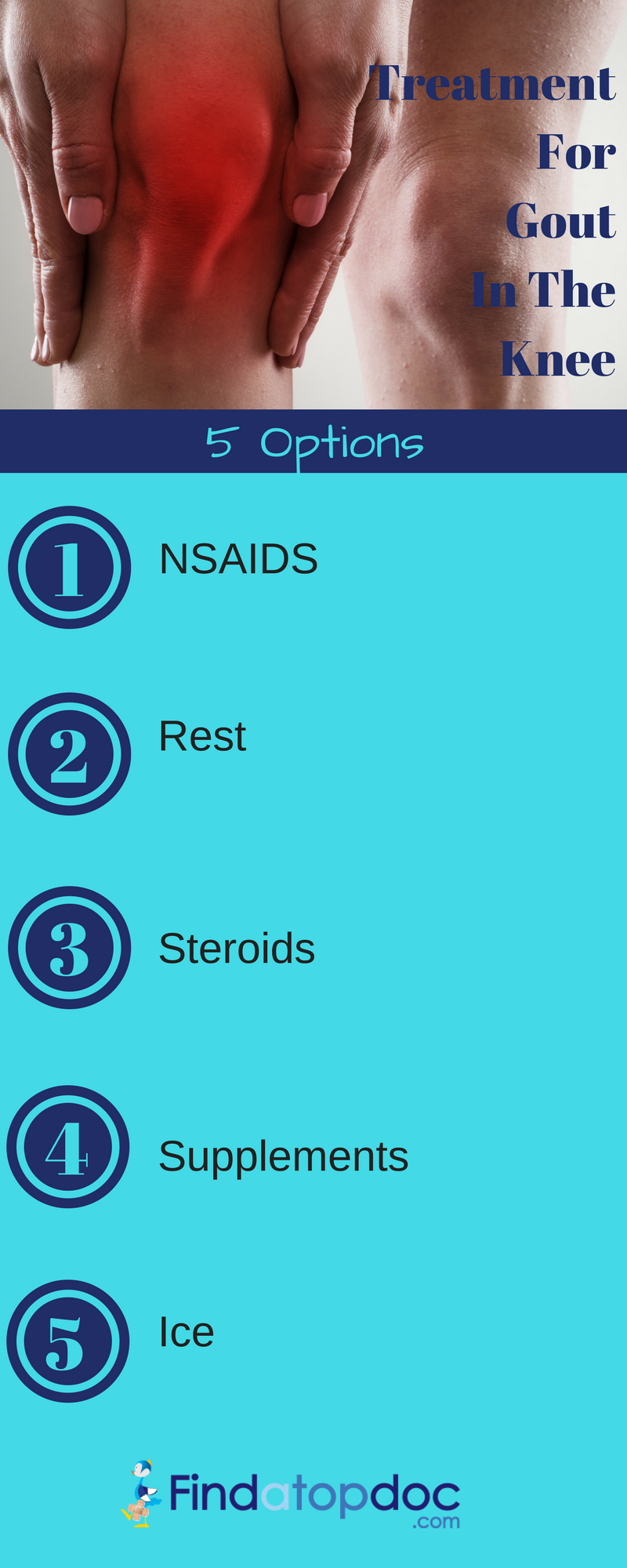
Gout in knee is an inflammatory condition of the joint leading to swelling, pain, and redness of the knee. Gout is a complex form of arthritis that can affect absolutely anyone. Men are documented as having the condition more often, but postmenopausal women become very susceptible as well in their later years. It is estimated that about one million Americans are affected by gout pain each year. The most common joint affected by gout is the big toe, but joint pain may also be experienced in the knees, hands, ankles, and wrists.
What Causes Gout?
An excess of uric acid in the blood brings on gout. Uric acid comes from two places - produced by the body and from the diet. Any extra uric acid usually filters through the kidneys and gets passed in urine. If the body produces too much uric acid or fails to excrete it in the urine, crystals of monosodium urate form in the joints and tendons. These crystals cause intense inflammation eventually leading to pain swelling and redness.
The most common factor that increases your chance of gout and gout attacks is excess consumption of alcohol, especially beer. It can occur in anyone and can be associated with injury or surgical procedures, hospitalizations, periods of stress, or reactions to diets high in meat and seafood, and certain drugs such as antibiotics. Gout may also occur in the presence of some tumors and cancers. Gout may also accompany psoriasis and is common in patients with transplanted organs due to medications that are often needed. Susceptibility to gout is often inherited and is often associated with other common illnesses such as high blood pressure, diabetes, and obesity.
Symptoms
Gout symptoms usually start at night due to lower body temperatures. The joint becomes hot, swollen and red and becomes very sore. The skin around the joint often looks shiny and there may be small, firm lumps under the skin. Sometimes, gout causes a fever. Left untreated, it settles down after a couple of weeks. Gout knee often makes weight bearing activities such as walking incredibly painful. Repeat episodes are common and most people will suffer a recurrence anywhere from 6 months to 2 years later. 60% of gout sufferers will have a recurrence within 1 year.
When to see your doctor
See your doctor if you suspect you have gout and it hasn't been previously diagnosed, particularly if the pain keeps getting worse and you have a high temperature. It's important that a diagnosis is confirmed because other conditions that require urgent treatment, such as an infected joint, can sometimes cause similar symptoms. If you've already been diagnosed with gout and you have an attack, see your healthcare practitioner if any medication you've been prescribed doesn't start working within a couple of days.
Treatment
Medications for the treatment of gout usually fall into one of three categories: uric-acid-lowering medications, prophylactic medications, and rescue medications to provide immediate relief from gout pain. Urate-lowering medications are the primary treatment for gout. These medications decrease the total amount of uric acid in the body and lower the serum uric acid level. For most patients, the goal of uric-acid-lowering medication is to achieve a serum uric acid level of less than 6 mg/dl. These medications are somewhat effective treatments to decrease the size of tophi, with the ultimate goal of eradicating them.
A general rule in medicine is that prevention is the best form of treatment, as never developing the condition through proper preventive measures will save you from distress as well as expensive medical bills. Make sure to contact your doctor if you notice any symptoms of gout in knee so you can react on time and come up with a treatment plan.


